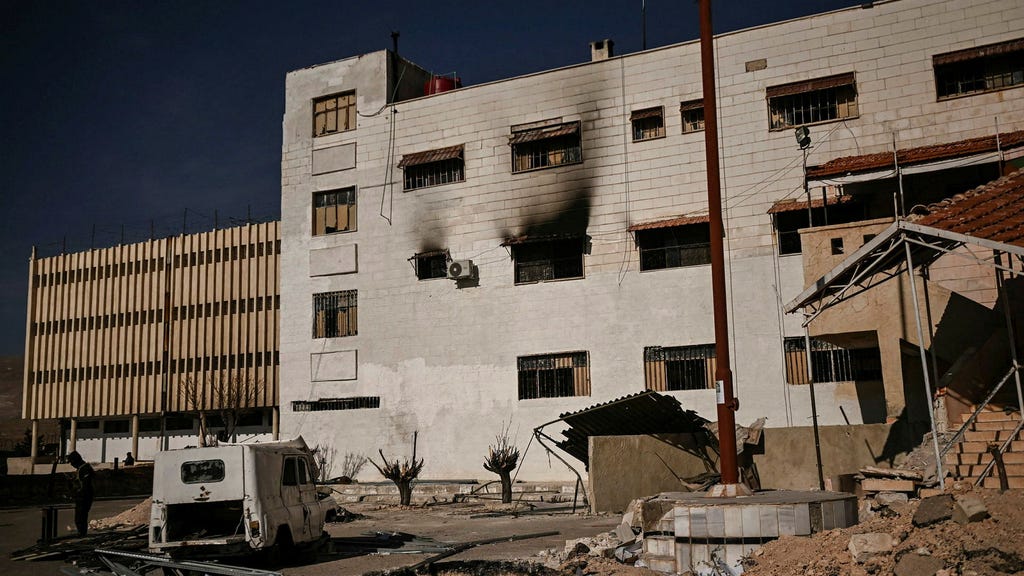Saydnaya Prison, situated outside Damascus, has become synonymous with brutality and human rights abuses. Constructed in 1987, this facility has been labelled a ”human slaughterhouse” by Amnesty International. Tens of thousands have been imprisoned within its walls, subjected to systematic torture, starvation, and extrajudicial executions. The sheer scale of suffering within Saydnaya paints a grim picture of a regime that prioritizes oppression and control over the basic rights and dignity of its citizens. This systematic, industrialized terror, however, did not originate with the Syrian civil war that began in 2011, but has deep historical roots within the Assad regime’s structure.
The Syrian government’s reign of terror predates the 2011 uprising, having been meticulously constructed over decades. The horrifying death toll, however, escalated dramatically with the onset of the civil war. The Human Rights Data Analysis Group, an independent organization, documented at least 17,723 deaths in Syrian government custody between March 2011 and December 2015. While data from subsequent years remains unavailable, there is strong evidence suggesting the killings continued unabated. This systematic extermination of perceived enemies of the state highlights the deep-seated brutality within the Assad regime’s apparatus of control. The documented figures represent only a fraction of the likely total, underscoring the scale of the ongoing human tragedy.
The foundation of this brutal system can be traced back to the post-World War II era, when the Assad regime, then under Hafez al-Assad, began constructing its security apparatus with the assistance of former Nazi officials. This chilling collaboration involved figures like Alois Brunner, a notorious SS officer wanted for war crimes. Brunner, a close associate of Adolf Eichmann, the architect of the Holocaust, brought his expertise in repression and extermination to Syria. He played a key role in shaping the Syrian security services and prison system, implementing methods reminiscent of the Third Reich. This dark chapter of history reveals the Assad regime’s willingness to embrace the tactics of some of history’s most brutal regimes to maintain its grip on power.
Brunner’s involvement in the Syrian regime demonstrates the extent to which it sought to emulate and implement the most effective methods of repression. Charged with sending over 128,500 Jews to their deaths during the Holocaust, Brunner evaded capture after the war, eventually finding refuge in Syria. Operating under various aliases, he served as a weapons dealer and advisor to the Syrian government. His presence in Syria underscores the regime’s willingness to harbor war criminals and utilize their expertise in constructing a system of fear and control. The Syrian government’s embrace of such figures highlights its disregard for international law and human rights.
The Syrian regime’s collaboration with Nazi figures was not limited to Brunner. Franz Stangl, the commandant of the Sobibór and Treblinka extermination camps, also found refuge in Syria before eventually fleeing to Brazil, where he was later apprehended and brought to justice. The willingness of the Syrian government to harbor individuals responsible for some of the worst atrocities in human history speaks volumes about its own moral compass and its readiness to employ brutal tactics to maintain power. The regime’s initial motivation for recruiting Nazi officials was tied to the impending creation of the state of Israel in 1948, an event the Syrian government vehemently opposed.
In subsequent decades, the Syrian regime, now allied with the Soviet Union, shifted its focus to East Germany’s Stasi for training and equipment. Syrian security agents regularly visited East Berlin, receiving instruction in espionage methods and interrogation techniques, including the systematic use of torture. Amnesty International documented 35 different torture methods employed by the Syrian security services in the 1980s, ranging from overcrowded cells to forcing prisoners to commit acts of violence against each other. While Brunner eventually met an unclear end in Syria, his legacy of brutality continued to permeate the Syrian security apparatus under Bashar al-Assad, solidifying a system of repression that has persisted for decades. The documented methods of torture provide chilling evidence of the regime’s systematic dehumanization of its perceived enemies.














